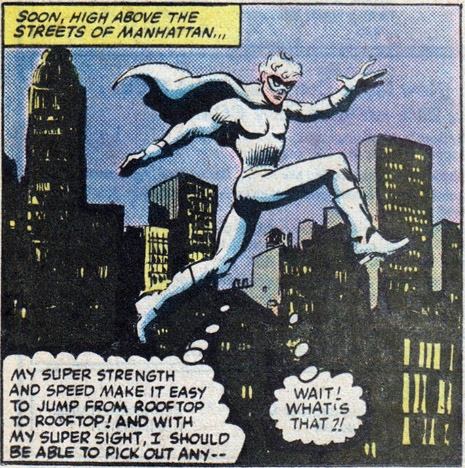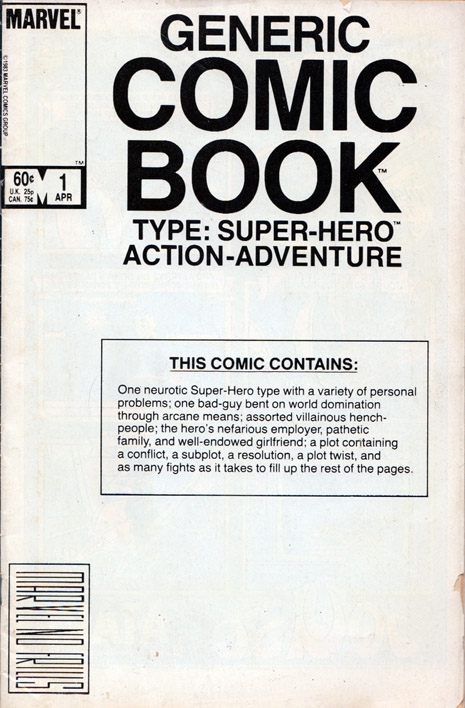
In the spring of 1984, Marvel Comics published a very strange one-off called Generic Comic Book, which was exactly as advertised: an all white cover to mimic ‘80s generic food labeling, an all white and nameless hero to the same end, completely one-dimensional characters and situations and a heavy reliance on tired tropes… so basically it was any old B-grade comic, only pointedly worse. I discovered it in the bargain comics box of my favorite toy shop, marked below its 60¢ cover price. You would have bought it, too.
The story begins with several pages of expository dialogue and internal monologue. We see right out of the gate that our hero has a girlfriend, but that’s about all that’s right with his crapsack life, and the girlfriend doesn’t even last past the first page. She’s literally put on a bus, never to be seen again. Our hero is broke. He wants to buy a house for himself and his girl, but he lives with his parents and also needs money to—I shit you not—“get little Bobby the operation he so desperately needs.” A professional writer got paid to write that line. I’m not bitter.

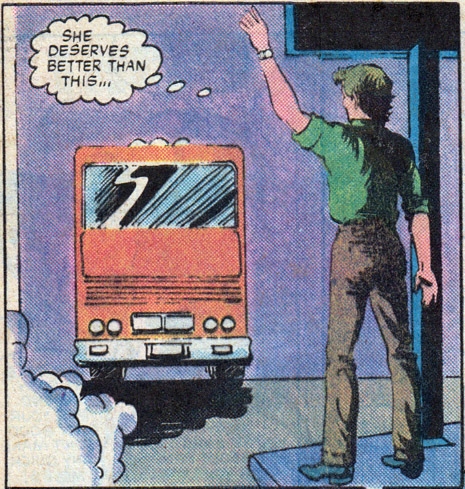

Could someone tell the letterist about “to” and “too?”
On his way home, our hero’s problems are compounded when he gets mugged by some generic goons. Acting out in frustration, he smashes the Three Mile Island snow-globe (RELEVANT SOCIAL ISSUE YOU GUYS) from his prized collection of glow-in-the-dark crap, setting in motion one of the most admirably preposterous superhero origin stories I’ve ever read: breaking the Three Mile Island snow globe atomically activated all the other iridescent stuff in the room (SEE? SEE? TOTALLY RELEVANT!), giving our hero super strength, super vision, super hearing—and bleaching his hair bright white.

If you can’t read whitey’s pin, it says “HEAVY MEAT.” I want to hear that band.




Because evidently our hero still wasn’t enough of a shit-lifer yet, here’s where we learn what a rough time he’s having at work. He’s got a generic cigar-chomping boss and a generic workplace rival—who’s so openly just a dick he may as well be twirling his moustache and saying “bwaaahahahaha”—standing between him and the promotion he needs to afford a generic house for his generic girlfriend and the generic operation for his generic little brother Bobby. Oh, and a generic workplace hussy hits on him a little, but she barely merits the mention as she’s less fully fleshed-out than the comatose character. But no matter, because on the bus home from work, our hero decides out of pretty much nowhere to become SUPER-HERO (TM), because “with great power…” and all that. Actually he doesn’t even give it that much thought, but he doesn’t need to think it through very seriously, because becoming SUPER-HERO is a simple matter of popping on in to the superhero outiftter’s shop in Flushing, Queens on his way home, to gear up. All in white. Of course. (I must note here with some amusement that a superhero supply shop has actually existed in Park Slope, Brooklyn for many years, an inspired façade for the 826NYC youth writing workshops.)

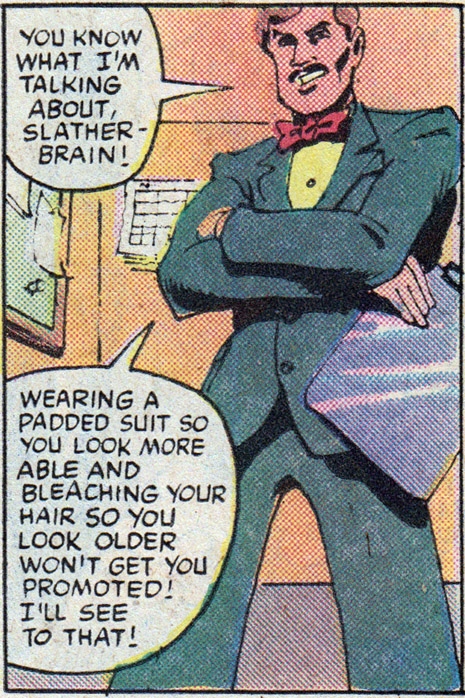
“Slather-brain?” Whyioughtta whyioughtta whyioughtta…

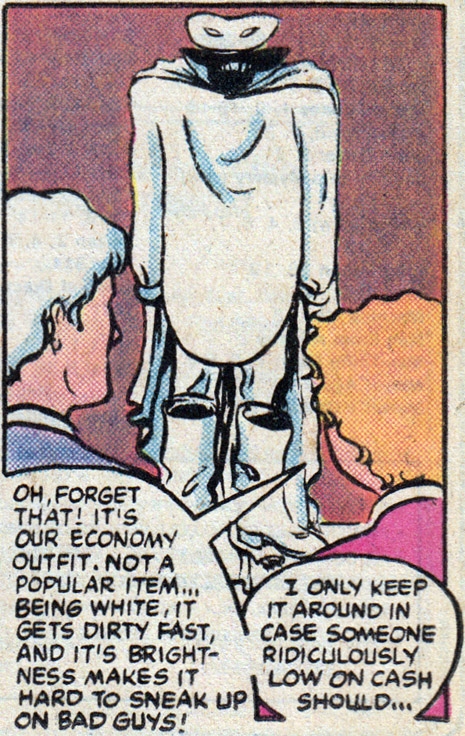

I love this panel—a New Yorker in 1984 isn’t sure if there’s crime at night?
But as we all learned from sitting through Unbreakable because we were told it was good by a friend whose recommendations I no longer heed, every SUPER-HERO needs a SUPER-VILLAIN (TM), and so there’s a crazy ex-scientist with a hypnotism helmet and no backstory beyond “I’ll show them all.” In keeping with his criminal M.O., I’m going to distract you from how little there is to care about him by showing you the cool, trippy panel depicting his power in action.
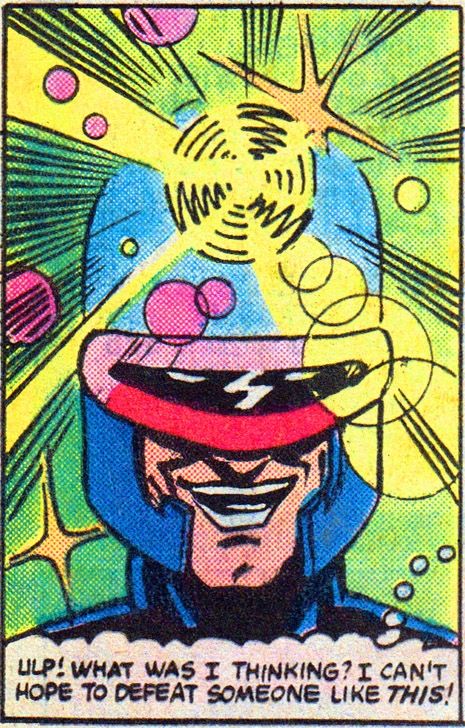
The usual story arc follows—SUPER-HERO gets his ass handed to him by SUPER-VILLAIN, but he regroups and gets his generic hero’s-journey shit together (using a football helmet) and effortlessly pounds the SUPER-VILLAIN and all his minions, saving the day! But oh, whoa, wait, dude, generic twist! Spoiler for a thing you’ll never read: the real mastermind behind SUPER-VILAIN’s crime was SUPER-HERO’s generic cigar-chomping boss, which puts his generic rival in charge of the company, meaning he’ll never get his promotion, and he’ll never be able to afford a generic house for his generic girlfriend and the generic operation for his generic little brother Bobby. Oh, sad trombone!
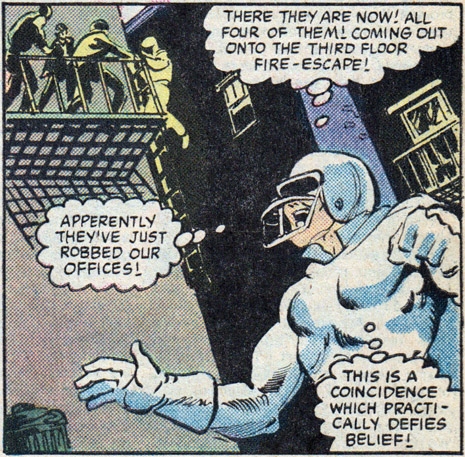
Yes. Yes it is. This is where it started to dawn on me that this might not have been incompetent writing, but rather lampshading.
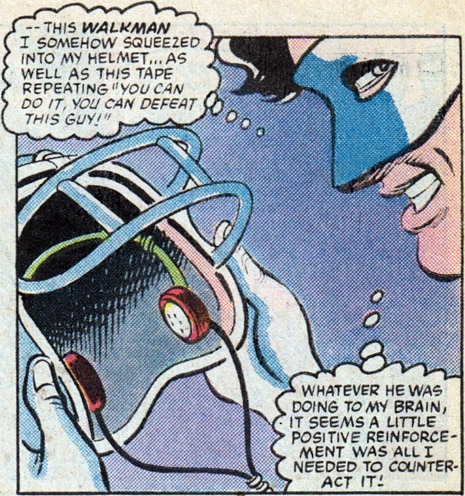
“Somehow?” HE DOESN’T KNOW?
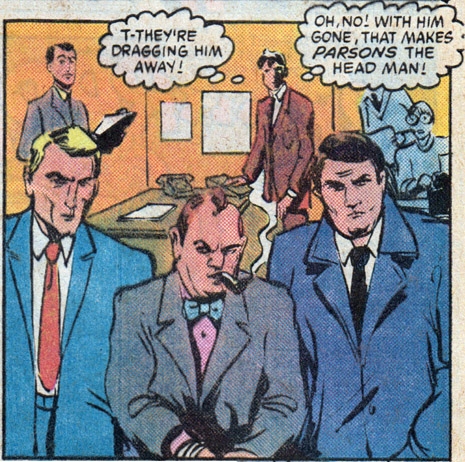
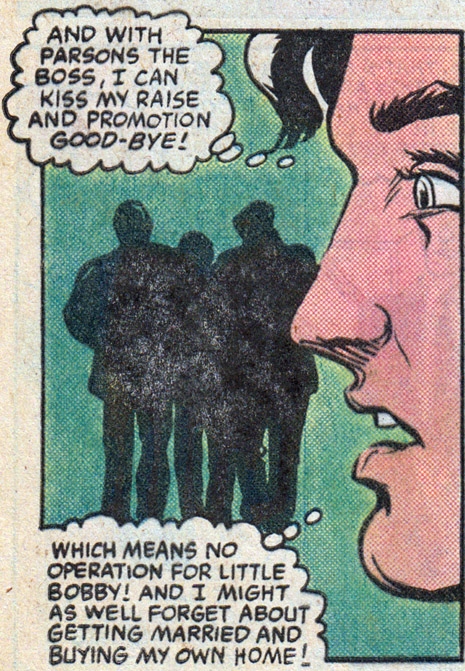

You’d only have to put up with more if you’d merited a second issue, champ.
So why on Earth was this made to begin with? The writer is credited as “A WRITER,” the artist is credited as “A PENCILER,” and the inker… do I have to even say it? It’s not just the hero that’s nameless, it’s everyone involved. So what was the point? This little notice buried in the copyright page gives a clue:
![]()
A post at Comic Book Tidbits suggests that Marvel was attempting to trademark the terms “superhero” and “supervillain” by using them as characters’ proper names:
There are varying opinions on the matter as to why this issue came into being, ranging from ‘in house’ joke at Marvel (a satire of how low cost, recycled comic stories were at the time), to a guide as to how to do comics the Marvel way. I don’t know, it seems ridiculous to me that a company would actually waste resources on such a thing. And if this was a guide, then I suppose it would explain that brush with bankruptcy Marvel had in the 1990s.
Best I can figure, this whole endeavor was about copyright. Look closely and you’ll note that Marvel has trademarked Super-Hero and Super-Villain, two fairly common lexicons of the comic book industry. Speaking of which, looking closely at the cover, you could argue that Comic Book has been trademarked as well as little white boxes (the horror!). Back before the information superhighway age, this was one way you could get the word out that Marvel and DC ruled the comic roost and small publishers should beware. And hey, it was probably cheaper than hiring a bunch of lawyers to scour the country for copyright infringement cases.
It’s an intriguing theory I was entirely willing to swallow, but Marvel and DC already jointly trademarked the word “superhero” in the ‘60s, to ensure that no third competitor could use it (hence “co-owned”). So I was still in the dark when it was my good fortune to turn up an online copy of Back Issue magazine, in which comics writer Steve Skeates, known for The Spectre, Namor the Sub-Mariner, and, er, Peter Porker, The Spectacular Spider-Ham, claims credit as “A WRITER,” offering the insight that the whole thing was basically an in-joke:
SKEATES: [editor] Larry Hama asked me to write something called The Generic Comic Book—I have no idea whose idea this was (perhaps [writer/editor] Tom DeFalco’s, perhaps Hama’s)—but what this baby essentially ultimately turned out to be was an old-style ‘70s sort of comic: clichéd, humorous, even silly, and with a what-if-superheroes-existed-in-the-real-world refrain. Wow, yes, I hadn’t had so much fun writing a comic book in something like five years, all of which convinced me that I didn’t really care where comics had gone, didn’t really care what editors now expected—this (the ‘70s sort of comic) was what I wanted to write!
